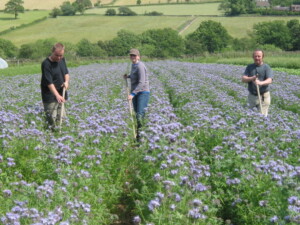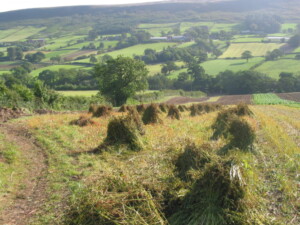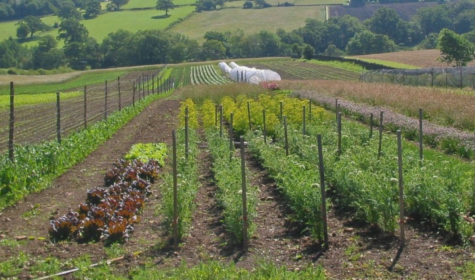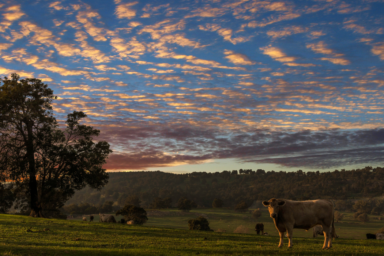Historically, Botton Village was a unique land-based Camphill care community in North Yorkshire where people with learning disabilities share family homes, living and working alongside volunteer co-workers. There were five thriving biodynamic farms and gardens, established food processing units, including a bakery and creamery, and a unique biodynamic plant breeding and seed producing cooperative. Everyone had a role and a purpose in the community and rather than focusing on the disabilities of villagers, the focus was on what people can do. Everyone was given the opportunity to learn new skills and work according to their abilities. Whether feeding the chickens, cooking lunch or running the village store, everyone was included with all of the work being done voluntarily and not for monetary gain as it was considered important for the wellbeing of the whole community. Living costs were shared and expenses met on a needs basis. This context has been an ideal place to practice biodynamic agriculture, where there is a mutual benefit between the people and the land.
Biodynamic agriculture thrives in a community context
Biodynamic agriculture is a holistic approach to agriculture that considers every farm as a living, evolving organism within which each part – livestock, crops and soil – is interdependent and interrelated to each other. The health of all parts determines the health of the whole farm. It adds a finer dimension to organic farming by focusing on raising the level of vitality in crops and livestock, by using various recommendations that Rudolf Steiner gave in his lectures. The biodynamic approach seeks to embody all aspects of the triple bottom line – ecological, economic and social. In Botton Village the therapeutic aspects of land work were not merely an activity to keep people busy, but provided a community of approximately 300 people with healthy food. In the past, Botton Village was self-sufficient in animal feed, meat, dairy and, for most of the year, vegetables. In addition, farm products, as well as bread from the bakery and jam from the Food Centre, were sold regionally and were a source of income for the village. Furthermore, Botton Village was training the next generation of farmers by running a biodynamic apprenticeship scheme which attracted apprentices from all around the world. I say ‘was’, because this truly extraordinary demonstration of a localised and sustainable food system has now significantly deteriorated in quality and authenticity, having departed from its founding principles and values. Biodynamic agriculture thrives when the social dimension is healthy. Sadly this is not the current state of affairs in Botton Village.

Biodynamics and land work has had a central role in the social care model of the rural Camphill communities, which was founded by Karl König in 1940 and inspired by Rudolf Steiner. This is not a surprise, considering that in Camphill, care for the vulnerable learning disabled is practiced holistically, with emphasis on a healthy lifestyle, environment and food system. Indeed, Karl König was very inspired by biodynamic agriculture and as a result, sustainable food and farming has been a central value and activity in over 100 Camphill communities across the world. Its success can be seen not only in the benefit to the communities, but in the high quality products that are sold across the UK and internationally, these include the award winning Loch Arthur cheese and Stormy Hall Demeter Seeds and a former veg box scheme at Oaklands Park.
Another positive consequence of the agricultural activities in Camphill communities are the health benefits. Dr Marcus van Dam, who has been Botton’s GP since 2004, explains that, “More than social care only, the Botton model is a way of life, creating much additional value for the disabled residents. It results in high levels of health and wellbeing for the people with learning disabilities, who as we know from various studies suffer higher levels of physical and mental illness in our wider society. You rarely see so many people with a learning disability, with such low levels of obesity, for example. This is not because the typical Botton meal is low-calorie, but because it is full of fruit and veg, the best quality meat and dairy and unrefined products, cooked fresh. People eat together, the meals are regular and consumed without a rush – all aspects of a generally healthy way of eating and living. These mealtimes are part of an active working day with much physical activity. I am sure this explains at least in part why obesity, Type 2 diabetes and cardiovascular disease, but also depression and anxiety have been so uncommon in Botton. Call it the ‘Botton effect’ – where genuine relationships in a caring community, meaningful work, healthy meals and physical activity all combine to keep people well and healthy. Unfortunately, this way of life is gradually disappearing as a new care model is being implemented by the charity, and I fear this may also begin to have an effect on the physical and emotional health of the village’s residents.”
Breakdown of the food system
Botton Village will reach its 60th birthday this year, but there is not much cause for a celebration. The community is at the brink of collapse due to a crisis of mismanagement at the hands of the Camphill Village Trust (CVT) – the charity that runs it. The residents’ chosen way of life and previously thriving land-based care community is under threat, having undergone many detrimental changes forced upon it by the CVT. Inevitably, this has had negative knock-on effects on the exemplar food and farming system that it has become known for. It remains unclear why the charity has decided to abandon the founding principles of Camphill. It has replaced voluntary co-workers with paid carers and imposed a regime of standardisation and control. CVT have argued that tax law changes, finances and new regulations have driven the restructuring, however, lawyers and accountants reviewing the Trust’s actions on behalf of the residents, have found these arguments to be unsubstantiated. Many people, including the parents of learning disabled residents, have written to CVTquestioning them about their decisions, but they have received no substantive response from the Trust. The majority of community members are still committed to the original values and founding principles for a healthy Camphill community life. Last summer a campaign group, Action for Botton, was set up by local supporters of Botton and the original Camphill ethos to support these community members in their cause.

It is clear that the disintegration of the community care model in Botton Village is not only of concern to those directly involved, but also to a wider public who organise themselves as a supportive network of Botton Buddies. Several local organic food outlets such as Alligator Wholefoods, The Dispensary and the Danby Health Shop have expressed concern about the new management regime and the move away from the co-operative, life-sharing co-worker model. A representative from Danby Health Shop further explained their reasons for ceasing to stock a variety of food products from Botton Village due to CVT’s recent actions: “It is with considerable regret, but we do not wish to support a regime which, in our opinion, divides a community and ultimately threatens its long-term viability. It is heartbreaking to witness the distress of the beneficiaries of the charity, the learning disabled villagers, their families, the dedicated co-workers and long-term supporters of the charity as Botton Village is seemingly torn apart.”
Hopes for the future
The loss of thriving biodynamic farms and food production in the Camphill Village Trust communities is of concern to all those who support the existence of local and sustainable food systems. Indeed, it is always unfortunate to see the decline of sustainable farms. This pattern can frequently be seen across the world, where farms are closed due to economic and regulatory pressures, land grabbing and corporate greed. Aside from my personal connection, the case of Botton Village strikes me as an unnecessary loss of quality food production which could be avoided if the CVT reassesses its position and recognises the incredible opportunity for sustainable agriculture and food production within the context of outstanding social care. Moreover, the top-down management structure and standardisation measures imposed upon Botton Village by the CVT, have unwittingly destroyed an inclusive community and a way of life that creates much additional value for all involved, but especially for the learning disabled residents.
The hope for revival of biodynamic agriculture within Botton Village still exists in the co-workers who work out of a genuine interest and passion for the land and healthy food it produces. There is real compassion for the learning disabled who they live and work together with. It is my sincere hope that their freedom to farm the land and live harmoniously in the community that they have nurtured for so many years is restored.
Opinion from Patrick Holden, Chief Executive of the Sustainable Food Trust:
“In 2004, I gave a keynote speech at Botton Village during a conference on biodynamic farming, marking the 80th anniversary of Rudolf Steiner’s agricultural lectures. I have had a longstanding association with biodynamic agriculture and studied it at Emerson College. Still to this day, this approach to agriculture continues to inspire me. What I remember most vividly about the conference in 2004 was that it was held in Botton Village, a Camphill community for learning disabled adults. It saddens me to hear that this way of life is now threatened, as well as such exemplar sustainable agriculture.
No doubt the current directors of the Camphill Village Trust are well-intentioned and probably feel they have a fiduciary duty to maximise the profits of what they are treating as ‘care homes’. Yet their ignorance of the original Camphill ethos is clearly having detrimental consequences. Camphill communities were intended to be places of shelter, healing and meaningful work in the world for learning disabled adults. These communities enable their extraordinary qualities to shine into the world, touching the hearts of those of us that have the great privilege to work with them.”





